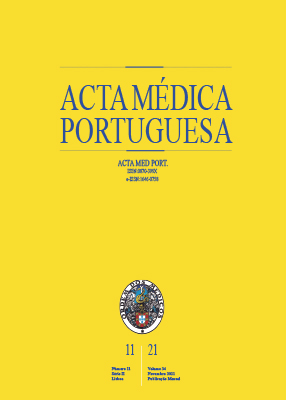Venomous Animals in the Portuguese Territory: Clinical Management of Bites and Stings
DOI:
https://doi.org/10.20344/amp.15589Keywords:
Animals, Bites and Stings, Portugal, Scorpion Stings, Snake Bites, Snake Venoms, Spider Bites, VenomsAbstract
There are many native species of animals with the potential to cause severe disease in Portugal. Of the four clinically relevant snake species, the vipers (Vipera latastei and Vipera seoanei) are the most concerning. They can cause severe disease and require in-hospital management, monitoring and specific treatment, including the administration of anti-snake venom serum. The Malpolon monspessulanus and Macroprotodon brevis snakes cause mostly localized clinical manifestations, which do not require specific treatment. Only a minority of the spider species in Portugal possess chelicerae (mouthparts of the Chelicerata, shaped as either articulated fangs or pincers, which may contain venom or be connected to the venom glands and are used for predation or capture of food) long enough to perforate the human skin. Nevertheless, Latrodectus tredecimguttatus and Loxosceles rufescens spider bites may require specialized treatment in a hospital setting, as well as careful active symptom surveillance. Diversely, the treatment for Scolopendra cingulata and Scolopendra oraniensis centipedes’ bites is merely symptomatic. The only existing scorpion species in Portugal is the Buthus ibericus; its sting typically causes local symptoms with intense pain, and its treatment consists essentially of analgesia. The insects of the Hymenoptera order, such as bees and wasps, have the ability to inject venom into the skin. Most people present only with local or regional inflammatory response, and symptomatic treatment is usually effective. Even so, individuals with hypersensitivity to bee venom may develop anaphylaxis. Several marine species in the Portuguese coast are venomous to humans, including weeverfish (Trachinidae family), stingrays (Dasyatis pastinaca, Taeniura grabata, Myliobatis aquila), red scorpion fish (Scorpaena scrofa), cnidaria (Pelagia noctiluca, Chrysaora hysoscella, Physalia physalis) and bearded fireworm (Hermodice carunculata); treatment is symptomatic. Contact with the larvae or bristles (chitinous structures with locomotor or tactile functions) of Thaumetopoea pityocampa (pine processionary) can cause cutaneous, ocular and, rarely, respiratory reactions; its management is also symptomatic.
Downloads
Downloads
Published
How to Cite
Issue
Section
License
Copyright (c) 2021 Acta Médica Portuguesa

This work is licensed under a Creative Commons Attribution-NonCommercial 4.0 International License.
All the articles published in the AMP are open access and comply with the requirements of funding agencies or academic institutions. The AMP is governed by the terms of the Creative Commons ‘Attribution – Non-Commercial Use - (CC-BY-NC)’ license, regarding the use by third parties.
It is the author’s responsibility to obtain approval for the reproduction of figures, tables, etc. from other publications.
Upon acceptance of an article for publication, the authors will be asked to complete the ICMJE “Copyright Liability and Copyright Sharing Statement “(http://www.actamedicaportuguesa.com/info/AMP-NormasPublicacao.pdf) and the “Declaration of Potential Conflicts of Interest” (http:// www.icmje.org/conflicts-of-interest). An e-mail will be sent to the corresponding author to acknowledge receipt of the manuscript.
After publication, the authors are authorised to make their articles available in repositories of their institutions of origin, as long as they always mention where they were published and according to the Creative Commons license.









